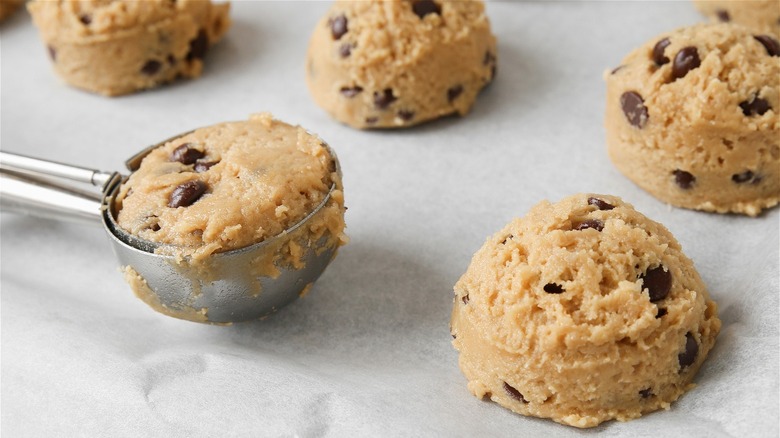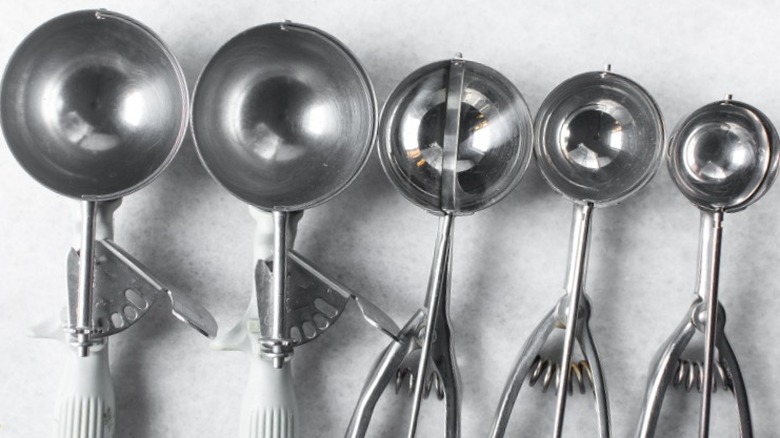The Size Of Your Cookie Scoop Matters
Many cookie recipes still call for the dough to be portioned out in measurements of teaspoons and tablespoons — a heaping teaspoon or a rounded tablespoon. This hedging accounts for the problem that dough portioned out in spoonfuls will vary depending on the baker and the utensils; cookies may end up too large or too small, and change the total that each batch yields. Uneven cookies also result in uneven baking — causing some to be burned, and some to be undercooked. Using a cookie scoop can solve all of your cookie-baking woes, but they come in a variety of sizes, so be sure you get the right one for the job at hand.
Cookie scoops have become an invaluable part of bakers' kitchen artillery. The sturdy tools (also known as dishers) scoop dough in exact portions to ensure that all cookies are the same size. Plus, the spring-loaded scoops drop the dough cleanly and neatly onto the baking sheet, so you'll get perfectly baked, evenly-edged, Instagrammable cookies. If you're worried about adding a niche tool to your cluttered kitchen that you'll only use when you bake the odd batch of cookies, fret not. These multi-purpose tools have a variety of uses, from scooping out the innards of baked potatoes to filling muffin or cupcake tins, to making truffles, or forming appealing balls of cantaloupe or the perfect ice cream cone.
This cookie scoop size works for most cookies
Cookie scoops are standardized and labeled by number. Somewhat confusingly, smaller numbered scoops hold more dough while higher numbered scoops hold less (this is because they're labeled according to how many scoops they can take out of a quart of ice cream). A good first cookie scoop to add to your kitchen arsenal is a #40. It scoops one and a half tablespoons of cookie dough, which is good for those average-sized cookies that everyone loves: standard cookies like everyday oatmeal raisin, peanut butter, or chocolate chip. For smaller cookies like rich butter cookies, or a big batch of little cookies for the holiday assortment, look for a #60 or #70-sized cookie scoop. They hold between one and one and a half tablespoons, which is the same as a 1-inch ball of dough. For jumbo bakery-style cookies, or large cookies to turn into ice cream sandwiches, a #20 cookie scoop holds three tablespoons of dough.
When you aren't sure what size to use, there are a couple of ways to narrow it down. Most cookie scoops will have the size printed on them (usually on the inside), but if you can't find it, fill the scoop with water, then transfer the water to a measuring cup or spoon to determine the volume. If a recipe calls for dough balls of a certain size (1 inch, 3 inch, etc.) measure across the top of the cookie scoop at its widest point. The scoop that comes closest to the diameter called for in the recipe is the one you want. Of course, variations in the batter, such as the quantity of butter, will affect how much the cookie spreads during baking, so be sure to take this into account when choosing your ideal cookie scoop size.

